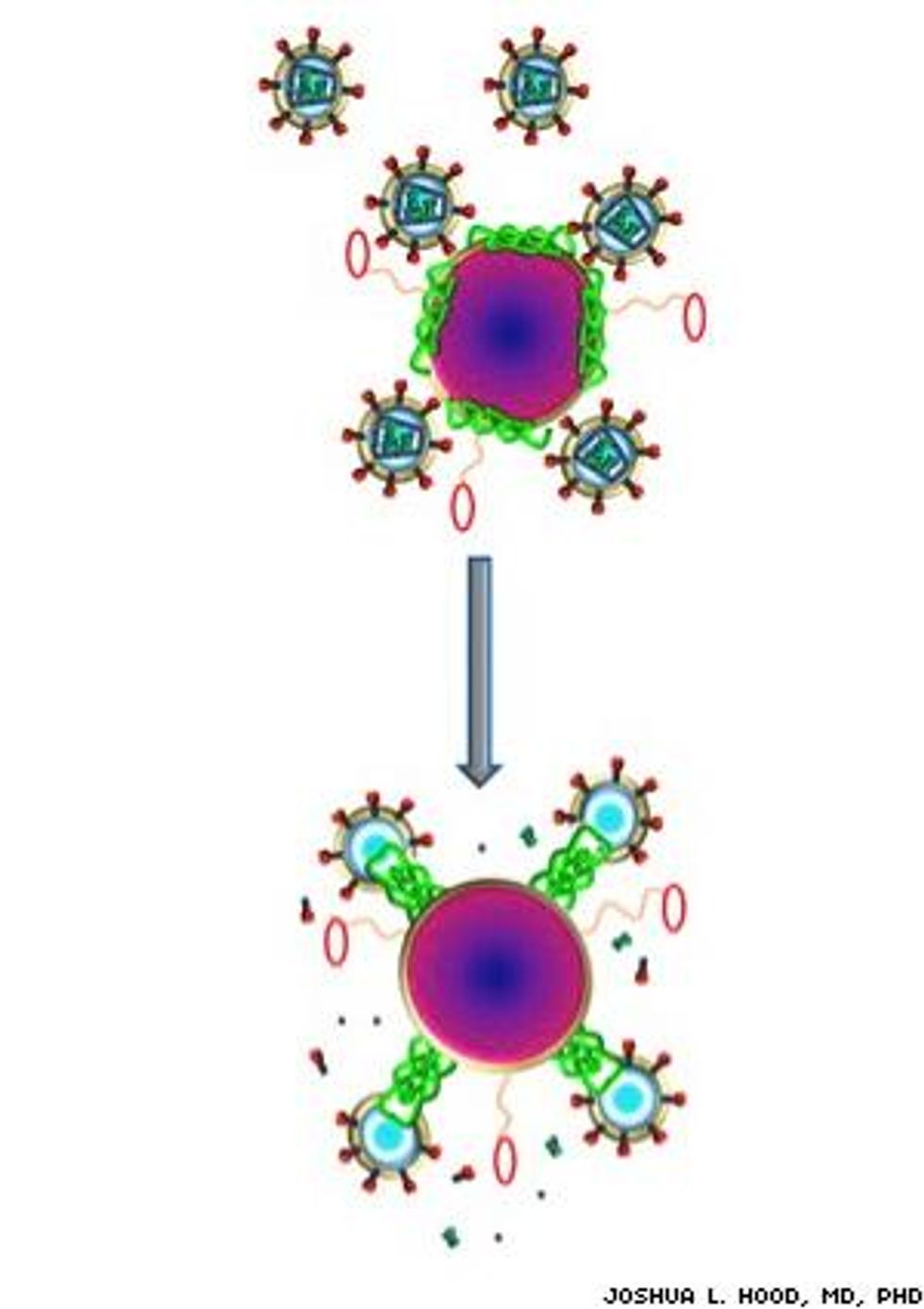 Nanoparticles carrying a toxin typically found in bee venom has the ability to destroy HIV, but still leave surrounding cells unharmed.
Nanoparticles carrying a toxin typically found in bee venom has the ability to destroy HIV, but still leave surrounding cells unharmed.
Scientists at Washington University School of Medicine in St. Louis, say that the toxin, known as melittin, could help create a potent vaginal gel that could halt HIV transmission. Because melittin is safe enough to use for a vaginal gel, the scientists say it could also be used for couples in which the male partner is HIV-positive, and they want to have children through natural birth. And ultimately, the toxin may even be used as a way to treat people with HIV, especially those who are drug-resistant.
"The basic particle that we are using in these experiments was developed many years ago as an artificial blood product," Joshua L. Hood, MD, PhD, said in a statement. "It didn’t work very well for delivering oxygen, but it circulates safely in the body and gives us a nice platform that we can adapt to fight different kinds of infections."
Melittin is also used to treat hepatitis B and C, because of its ability to attack double-layered membranes indiscriminately, the researchers said.
The scientists are sure that a high yield of nanoparticles can be manufactured to provide enough quantities for clinical trials in the future.
Full findings were published in the journal, Antiviral Therapy.
IMAGE: Nanoparticles (purple) carrying melittin (green) fuse with HIV (small circles with spiked outer ring), destroying the virus’s protective envelope. Molecular bumpers (small red ovals) prevent the nanoparticles from harming the body’s normal cells, which are much larger in size.

 Nanoparticles carrying a toxin typically found in bee venom has the ability to destroy HIV, but still leave surrounding cells unharmed.
Nanoparticles carrying a toxin typically found in bee venom has the ability to destroy HIV, but still leave surrounding cells unharmed.






































































